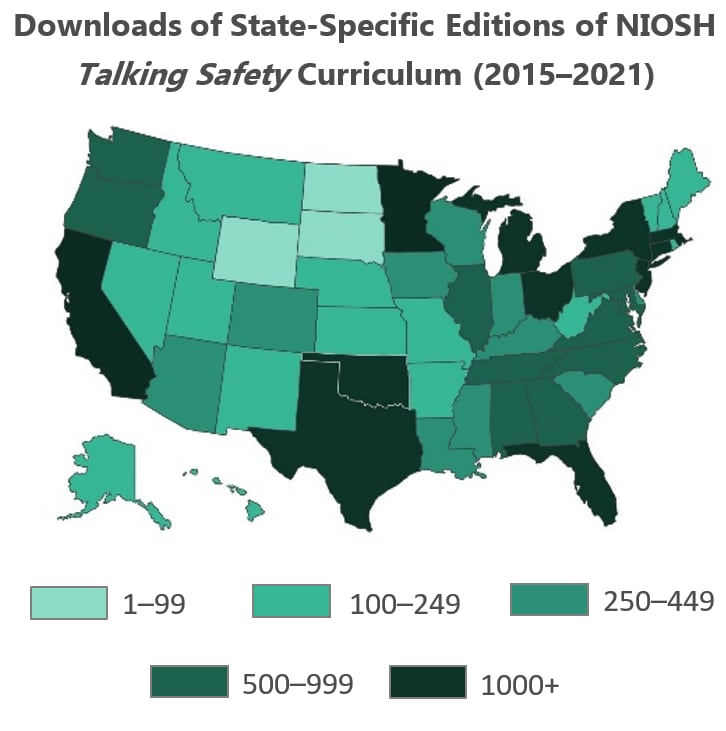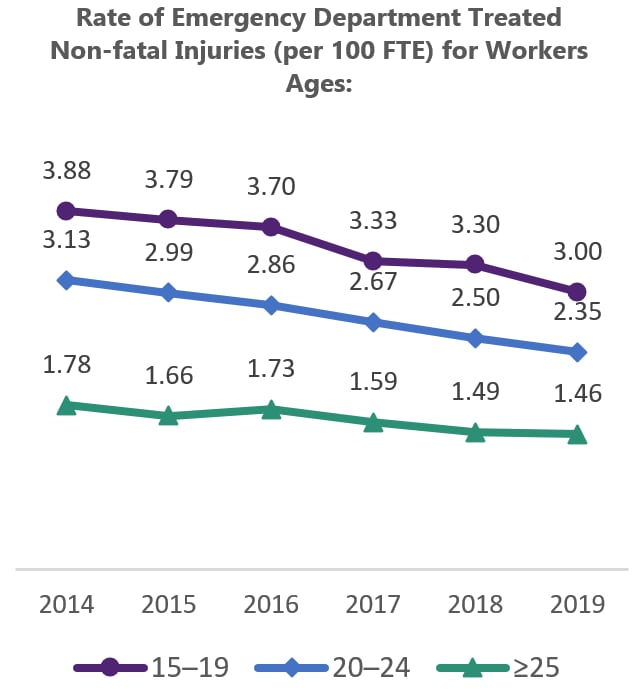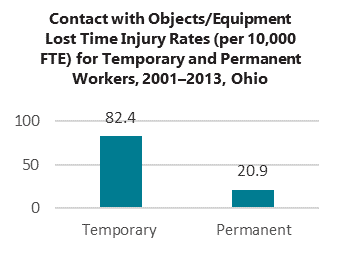Safe • Skilled • Ready Workforce Program
New workers are at high risk for workplace injury. New workers include young workers (ages 15–24) and contingent workers (those who do not expect their job to last or describe their job as temporary). The National Institute for Occupational Safety and Health (NIOSH) Safe • Skilled • Ready Workforce (SSRW) Program collaborates with partners to prepare new workers with essential knowledge and skills that enable these workers to contribute to and benefit from safe, healthy, and productive workplaces.
- Develop and evaluate foundational workplace safety and health curricula for new workers. Advise potential collaborators on their use.
- Research workplace safety and health hazards and exposures faced by new workers and groups at higher risk for job-related injuries and illnesses.
- Conduct implementation research to better understand the barriers and facilitators to adoption and sustainability of SSRW programs and activities.
- Disseminate research findings to diverse partners in industry, labor, government, academia, education, and community groups.
- Partnered with the Occupational Safety and Health Administration (OSHA) and the American Federation of Teachers to develop a new OSHA 10-hour General Industry training tailored for high-school Career and Technical Education students in the Health Sciences.
- Published a new set of workplace safety and health best practices for host employers of temporary workers, which is co-branded by NIOSH and partners.
- Conducted a virtual training with middle- and high-school students from a school district in Connecticut using the Safety Matters curriculum.
- Delivered an overview of the Youth@Work—Talking Safety curriculum and a sample lesson to The Center for Construction Research and Training (CPWR).
- Collaborated on multiple CDC/NIOSH COVID-19 research and outreach activities protecting K–12 teachers, staff, and temporary workers during the pandemic. Temporary workers are paid by a staffing company and assigned to work for a host employer.
- Planned and conducted a social media campaign with OSHA and other partners focusing on young worker safety and health, #KeepTeenWorkersSafe.
- Begin data collection for the study being conducted in collaboration with the Miami-Dade County Public Schools of the implementation and effectiveness of the new OSHA 10-hour General Industry training for students in the health sciences.
- Pilot test a new foundational workplace safety and health training curriculum for contingent workers seeking employment and training opportunities through workforce development organizations.
- Update Talking Safety to incorporate new content and lessons learned from our research and outreach activities.

Mention of any company or product does not constitute endorsement by the National Institute for Occupational Safety and Health, Centers for Disease Control and Prevention.
The Safe • Skilled • Ready Workforce Program aims to prepare people before they join the U.S. workforce for the first time or start a new job. We develop, implement, and evaluate training interventions to deliver foundational workplace safety and health competencies to help protect new workers on the job. This snapshot shows recent accomplishments and upcoming work.

Source: NIOSH program records

Source: NIOSH NEISS Work-RISQS

To learn more, visit
www.cdc.gov/niosh/programs/ssrw
